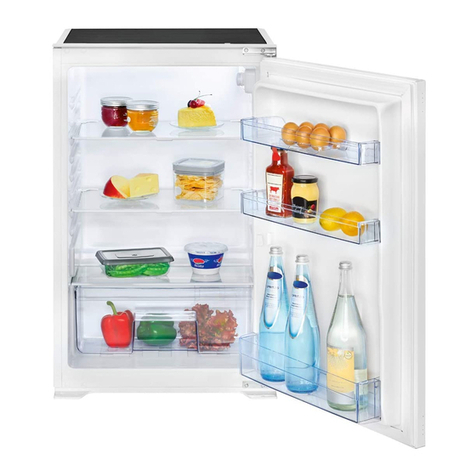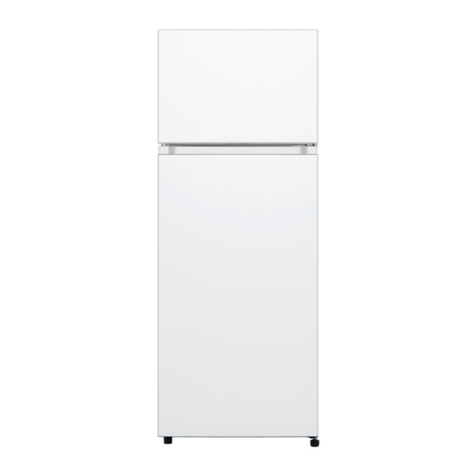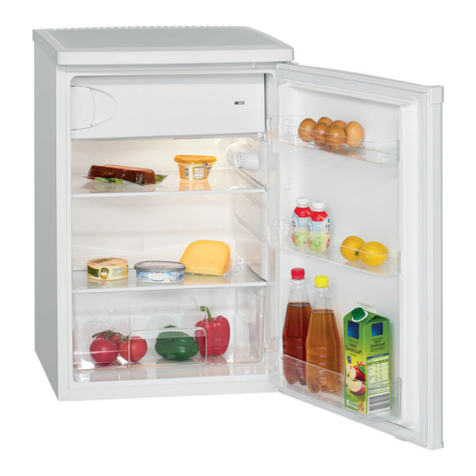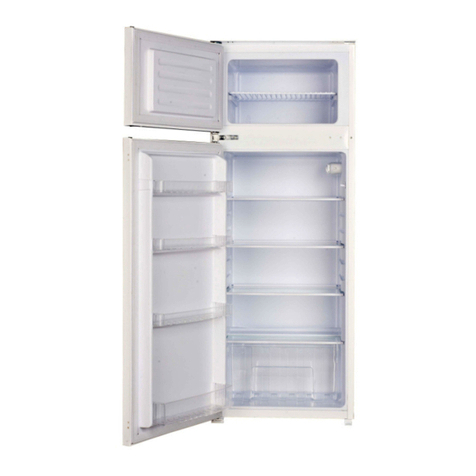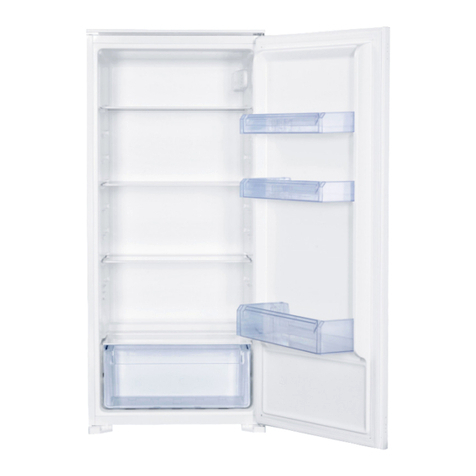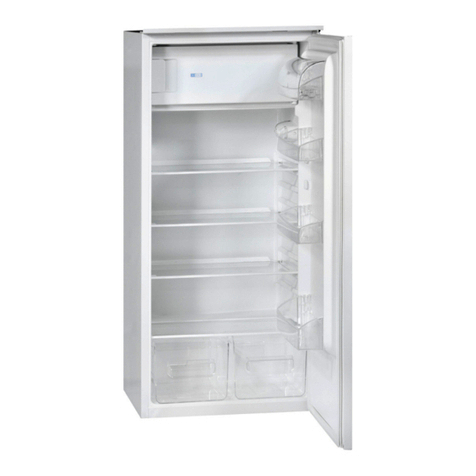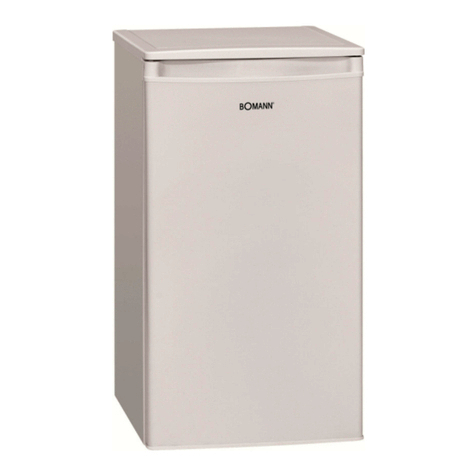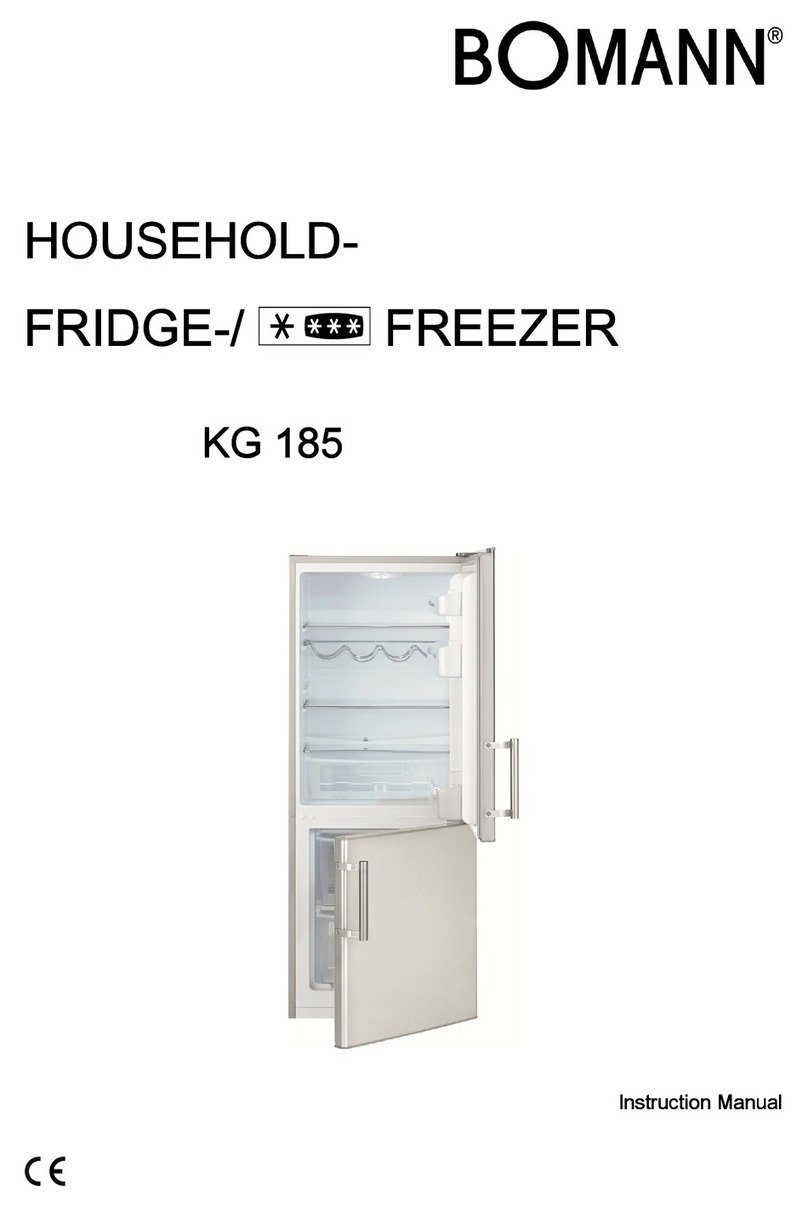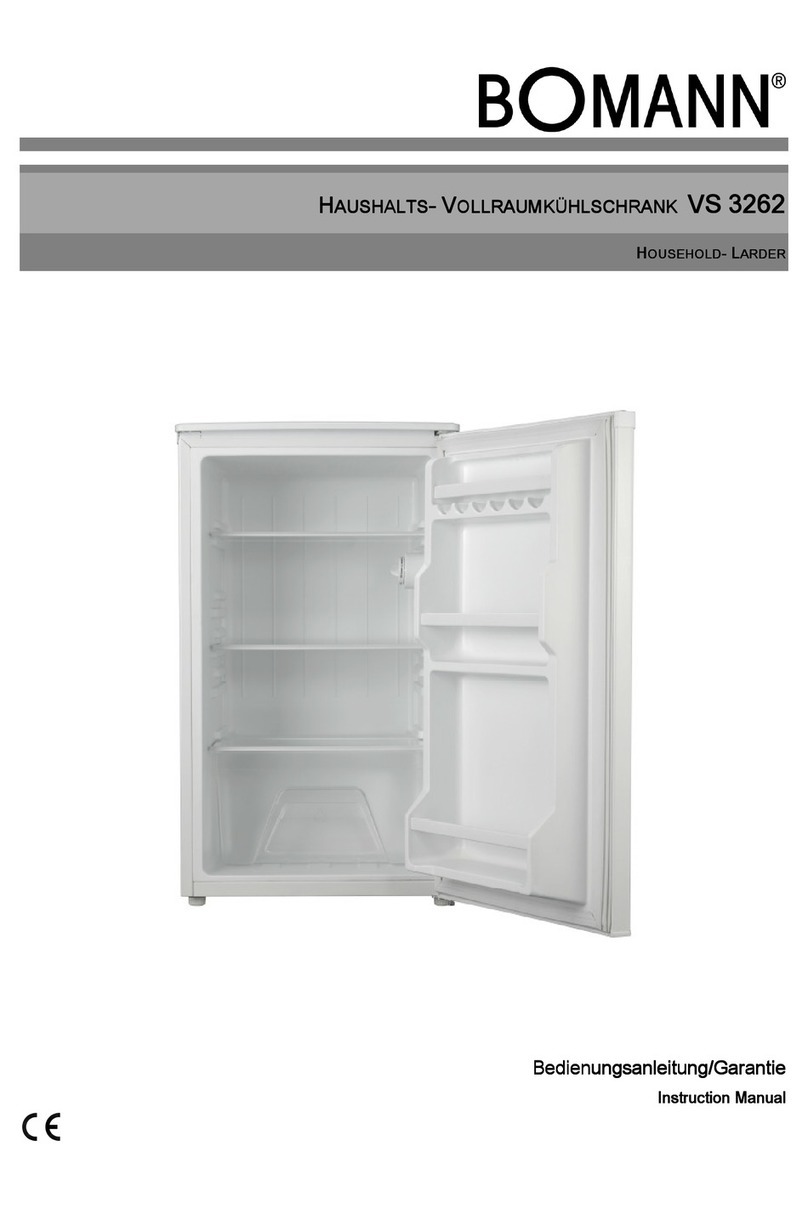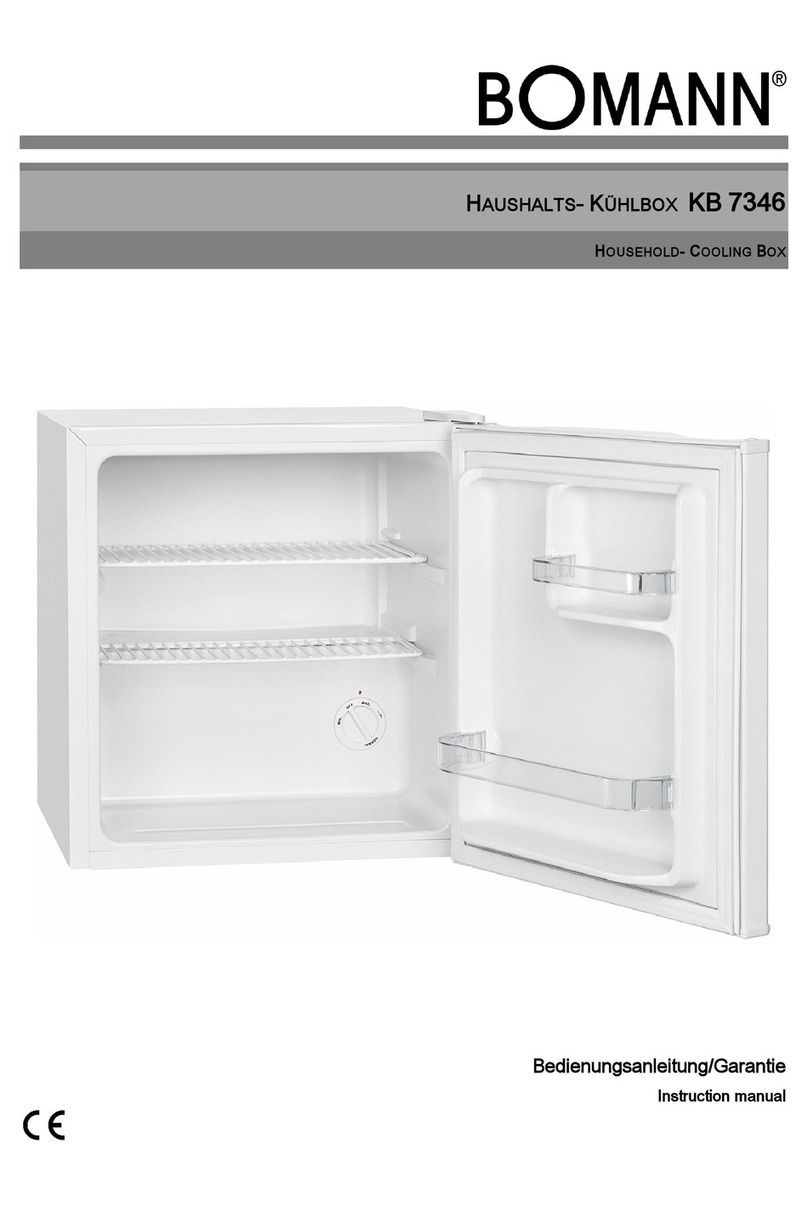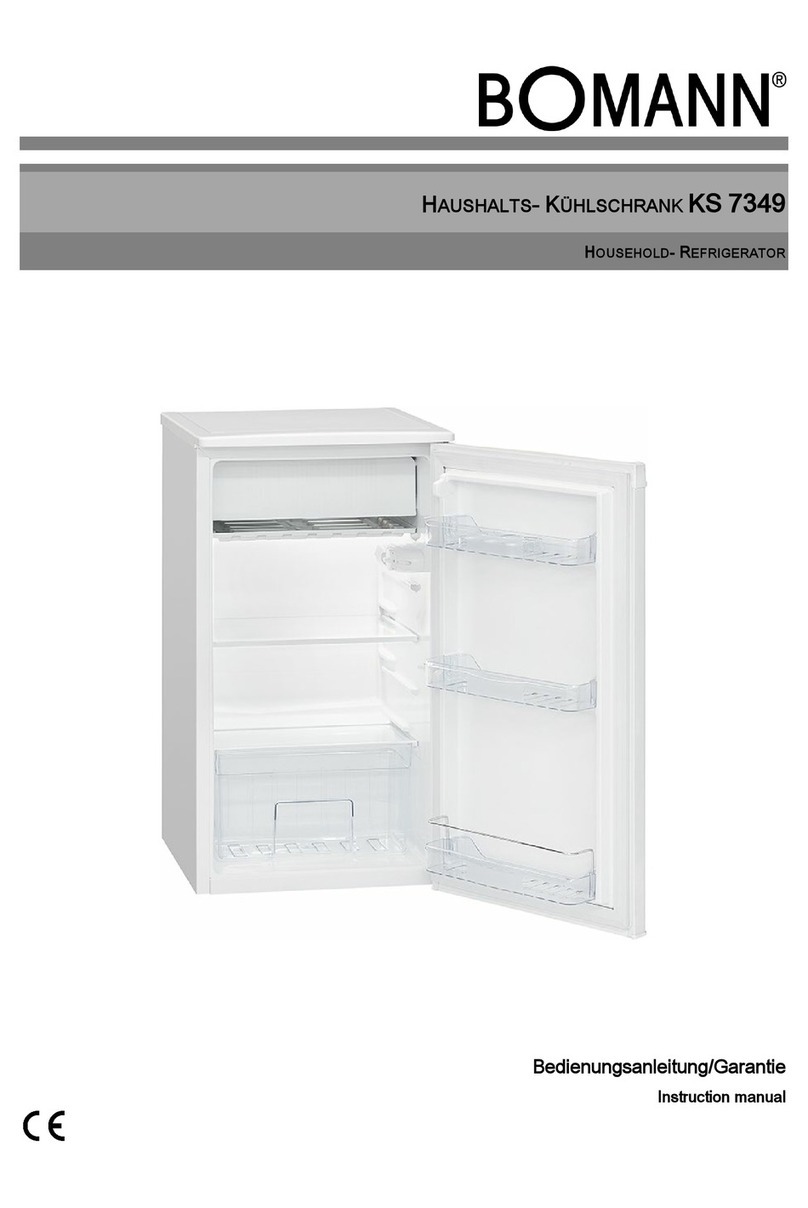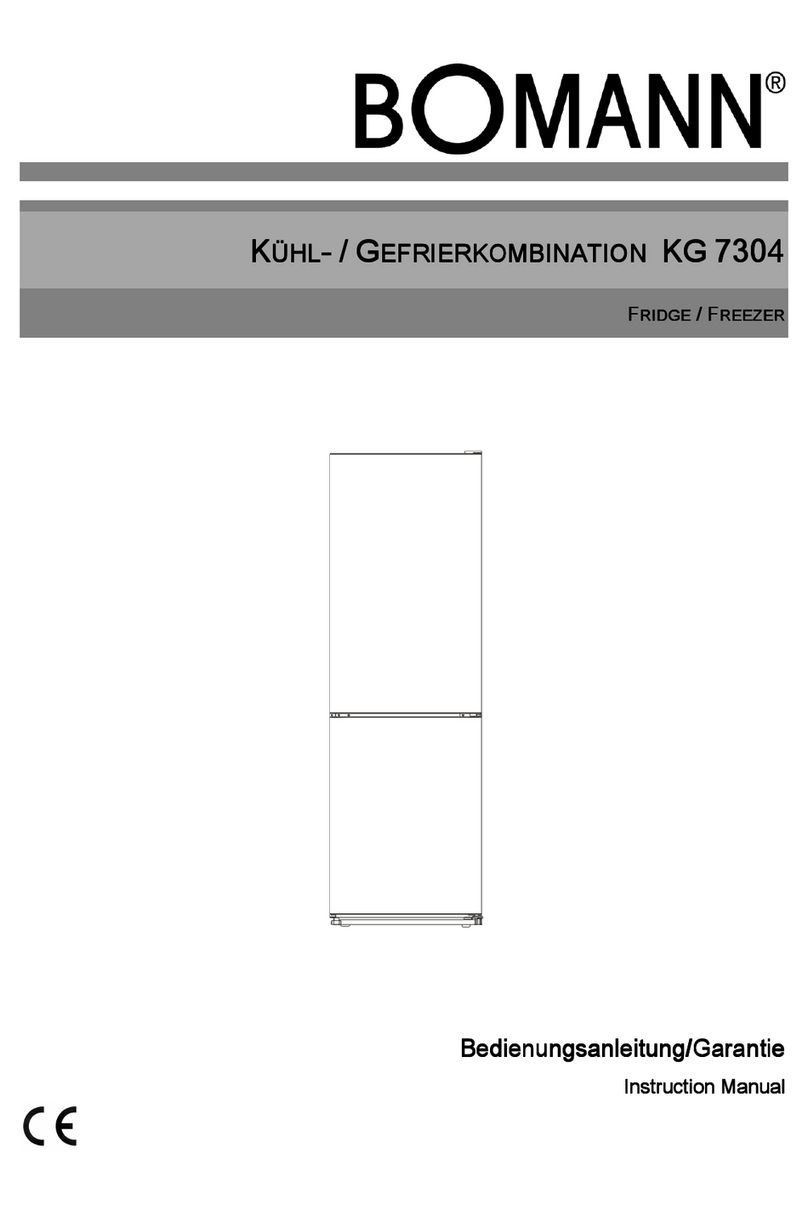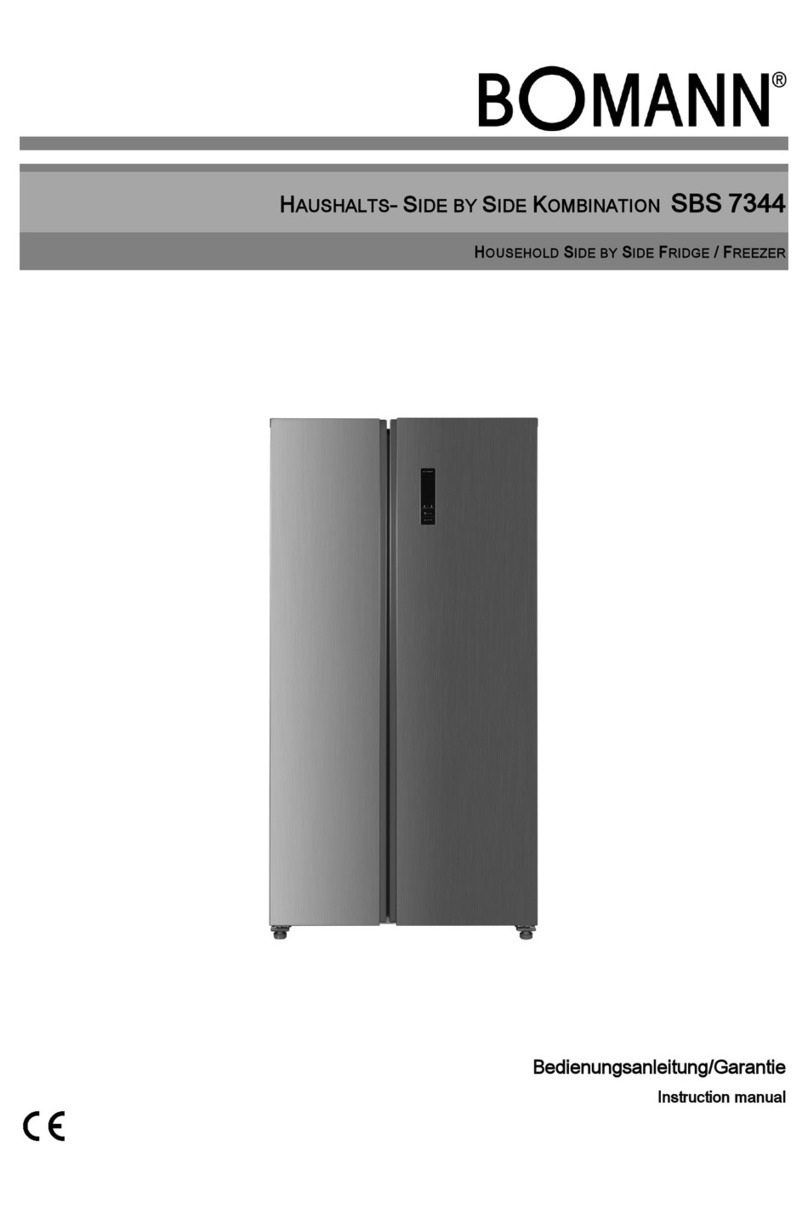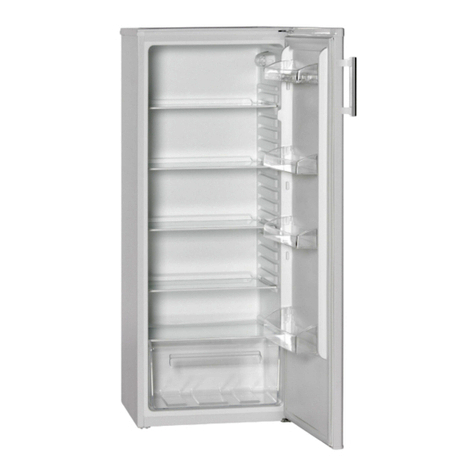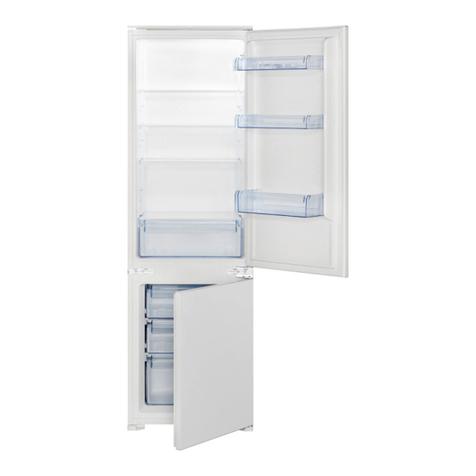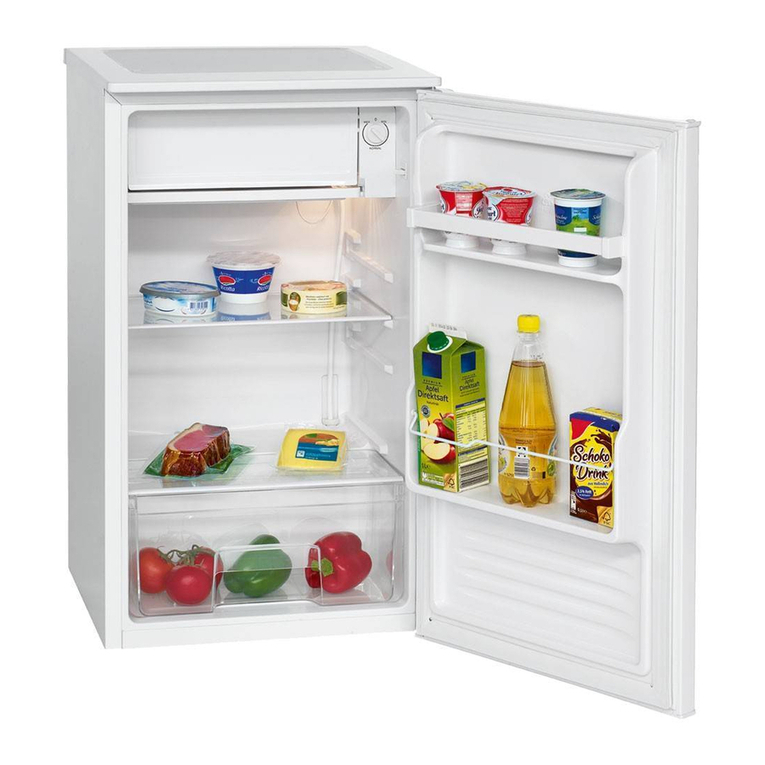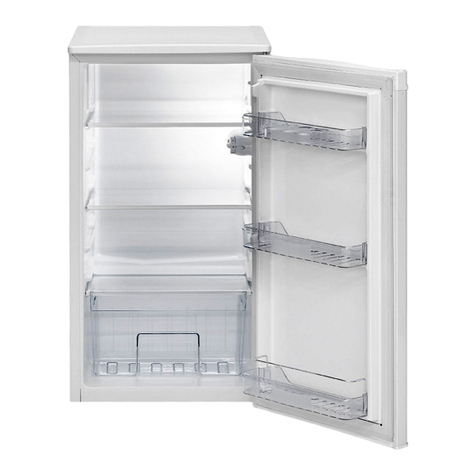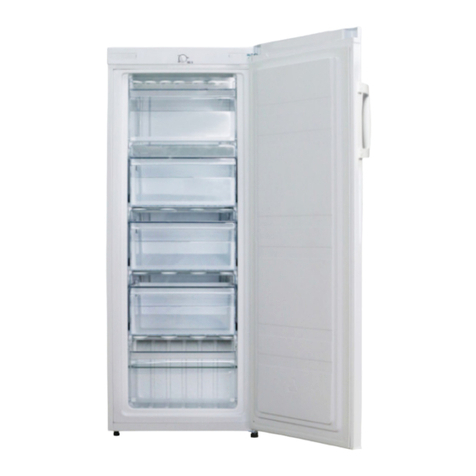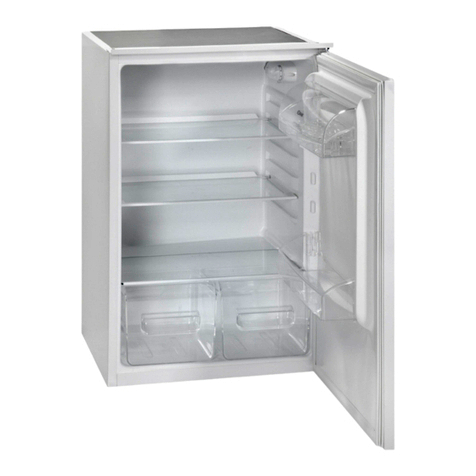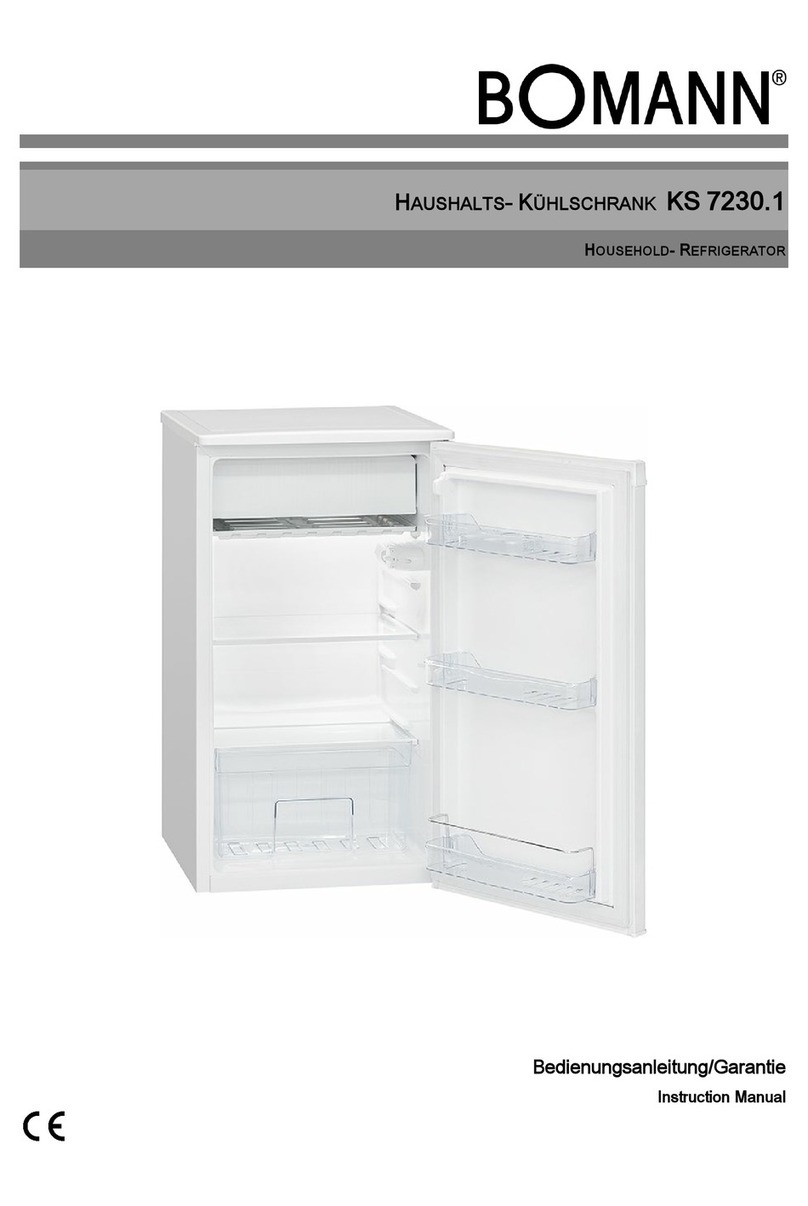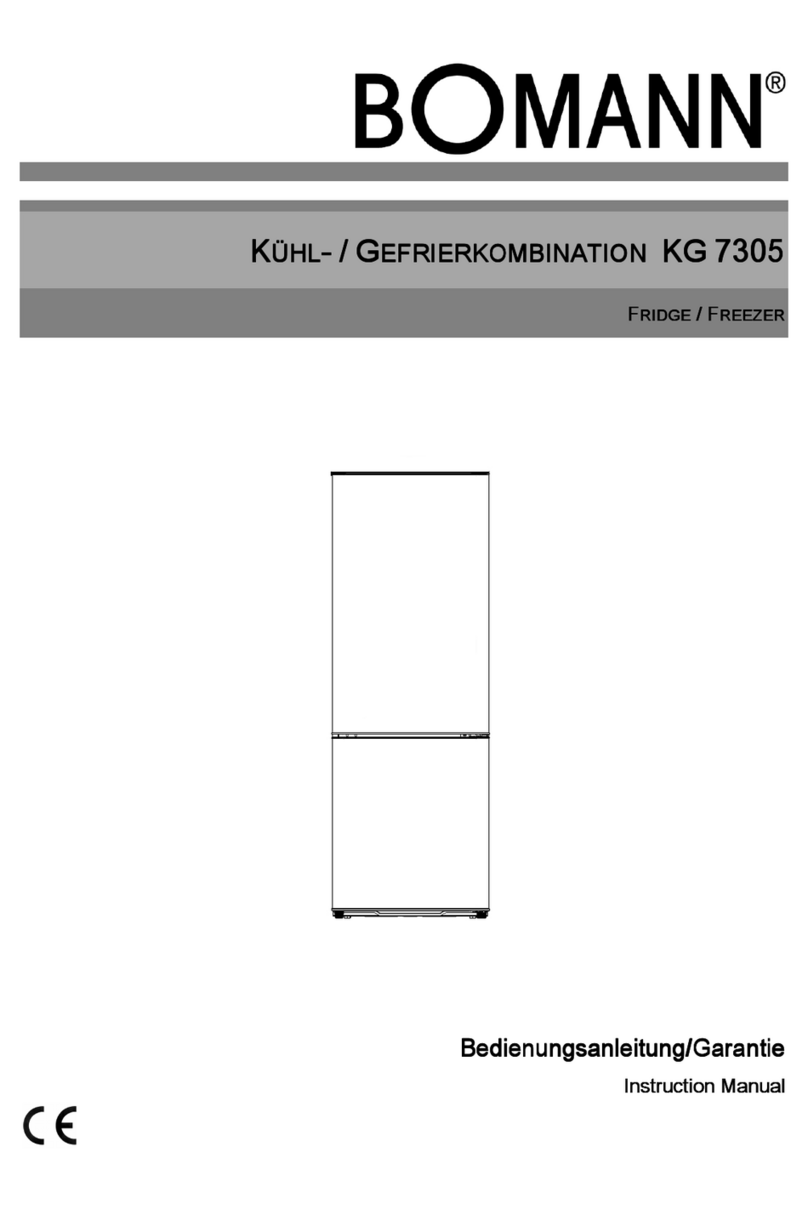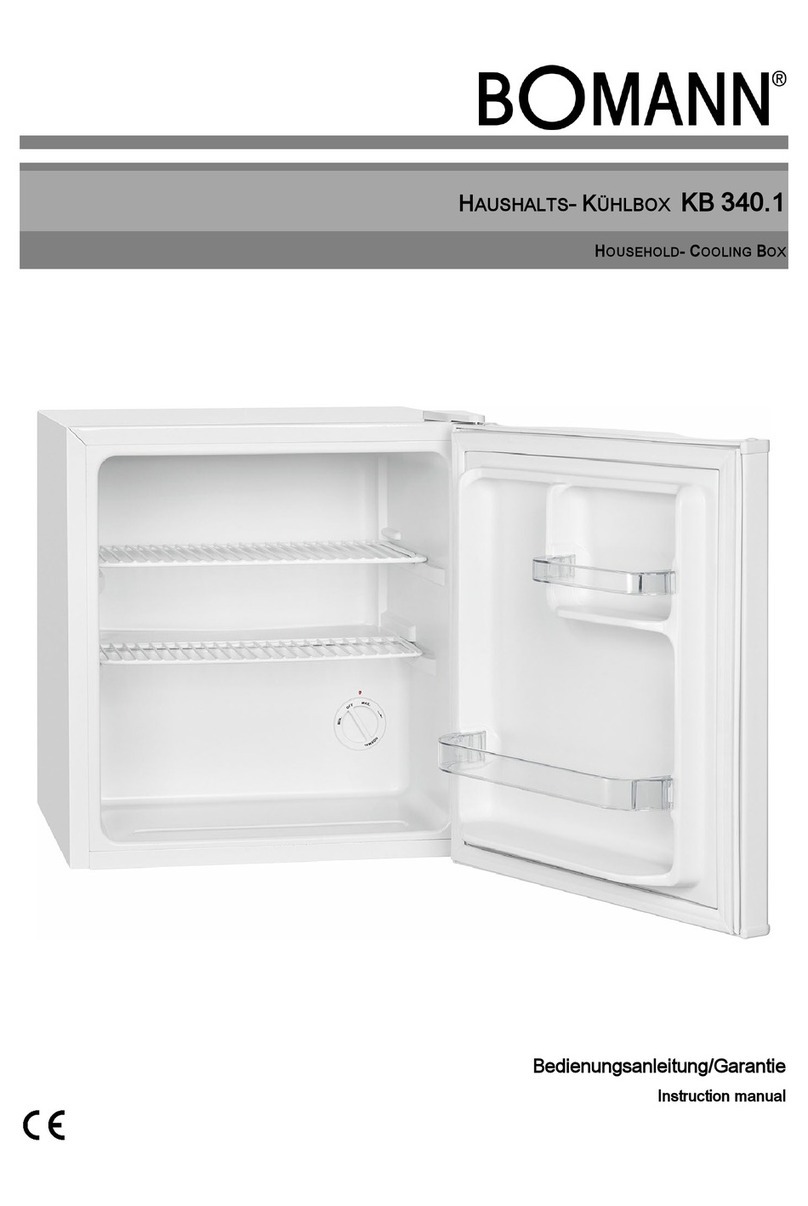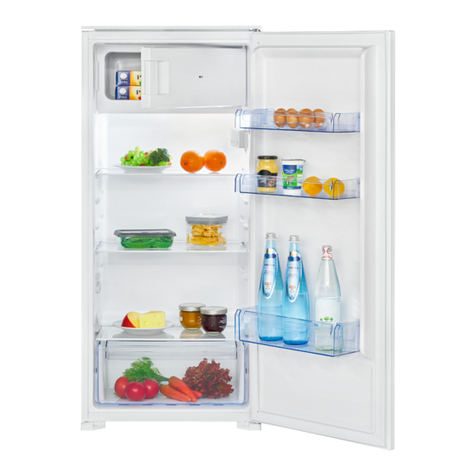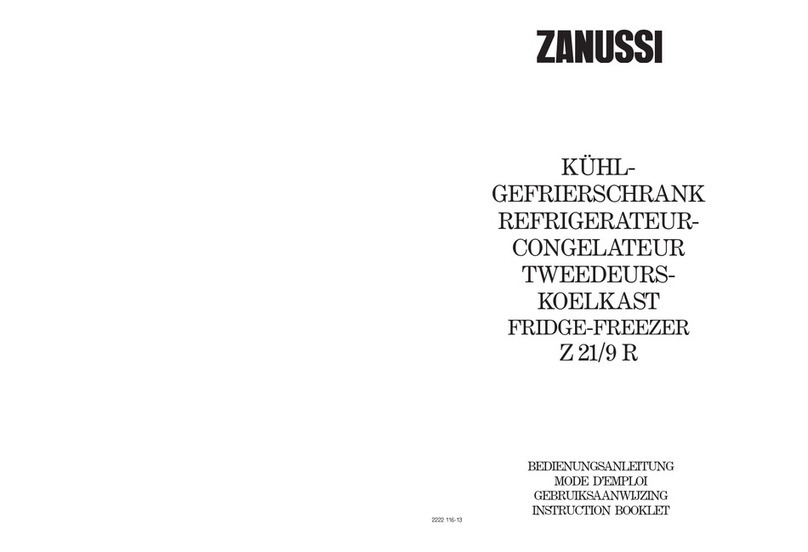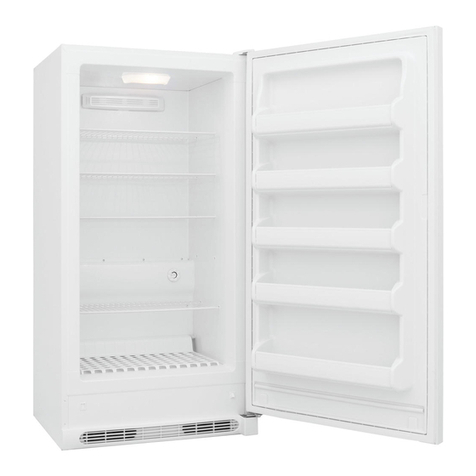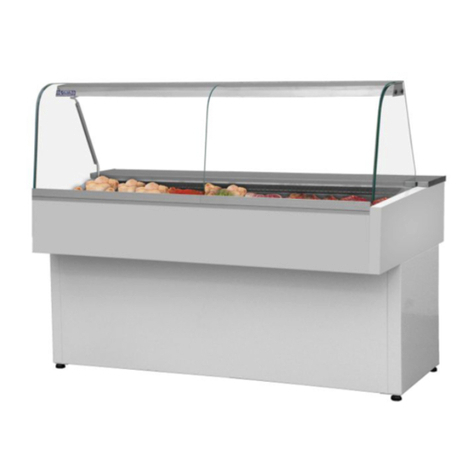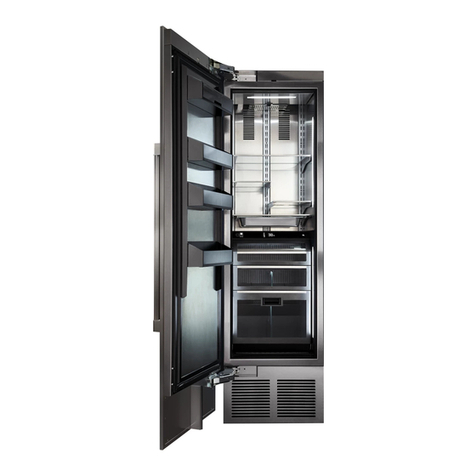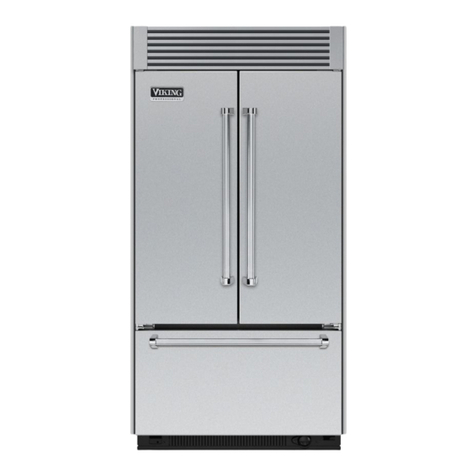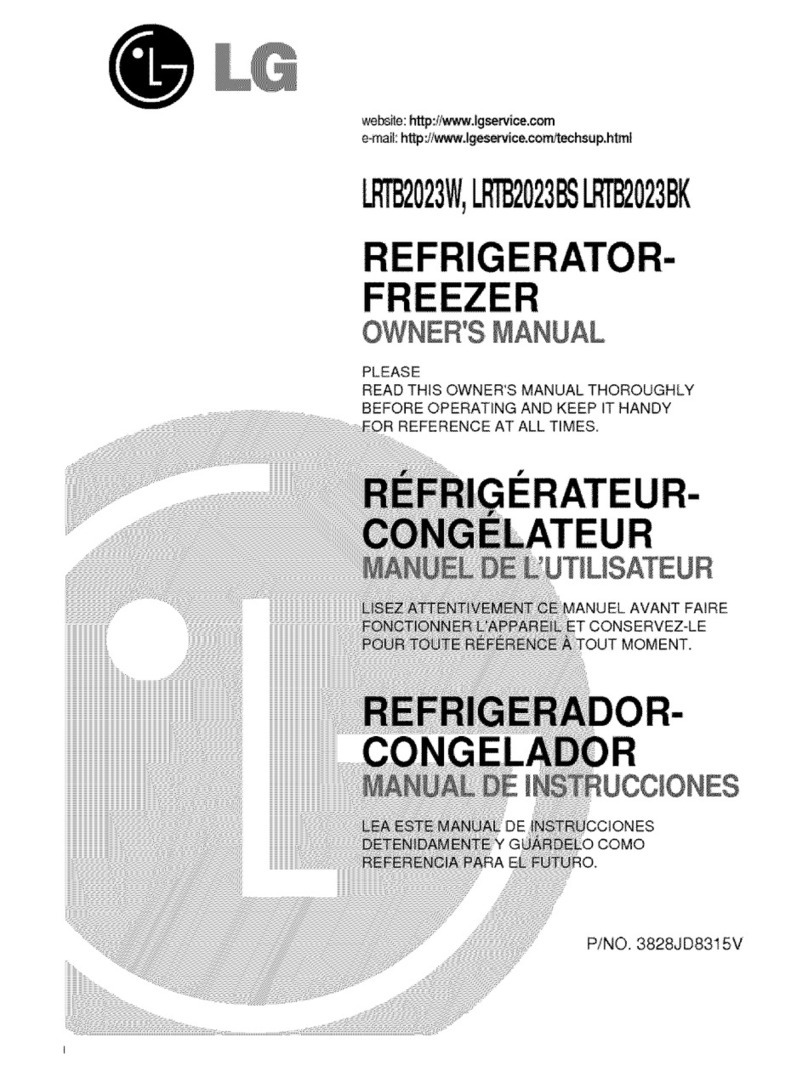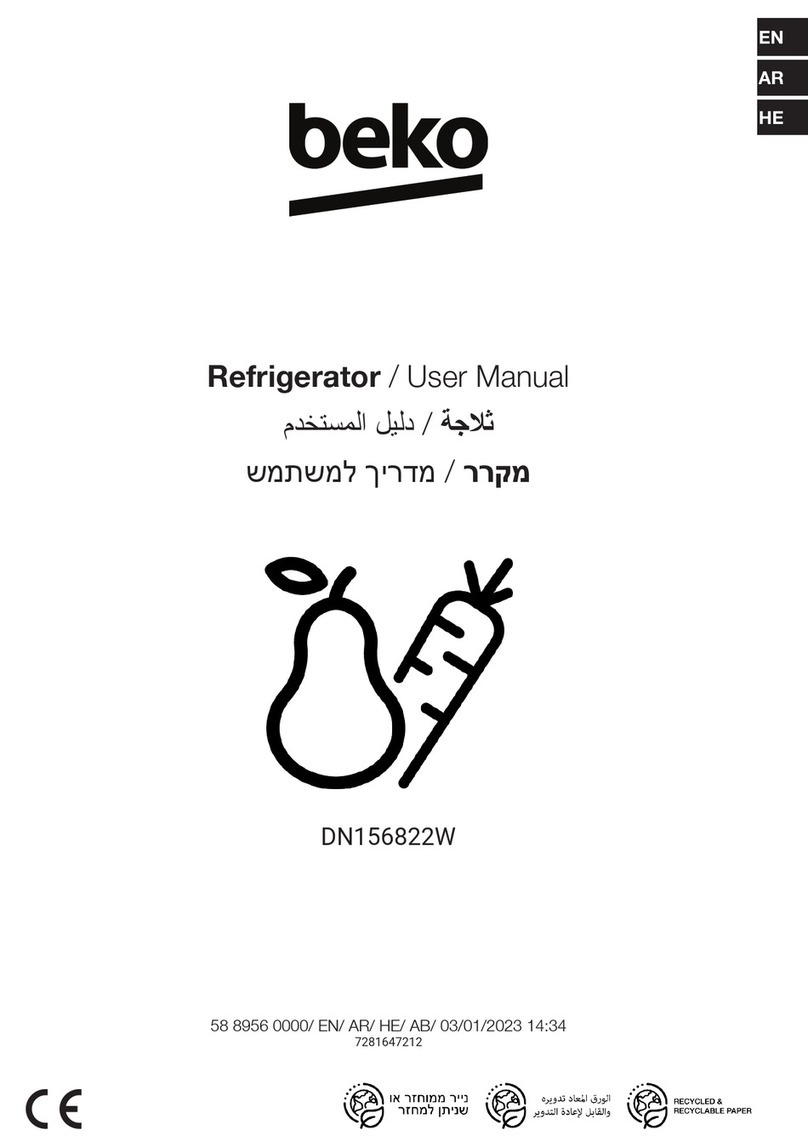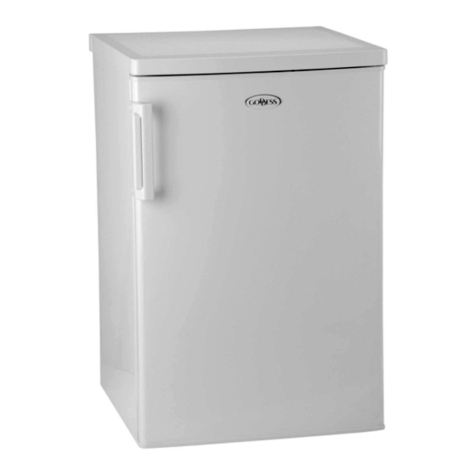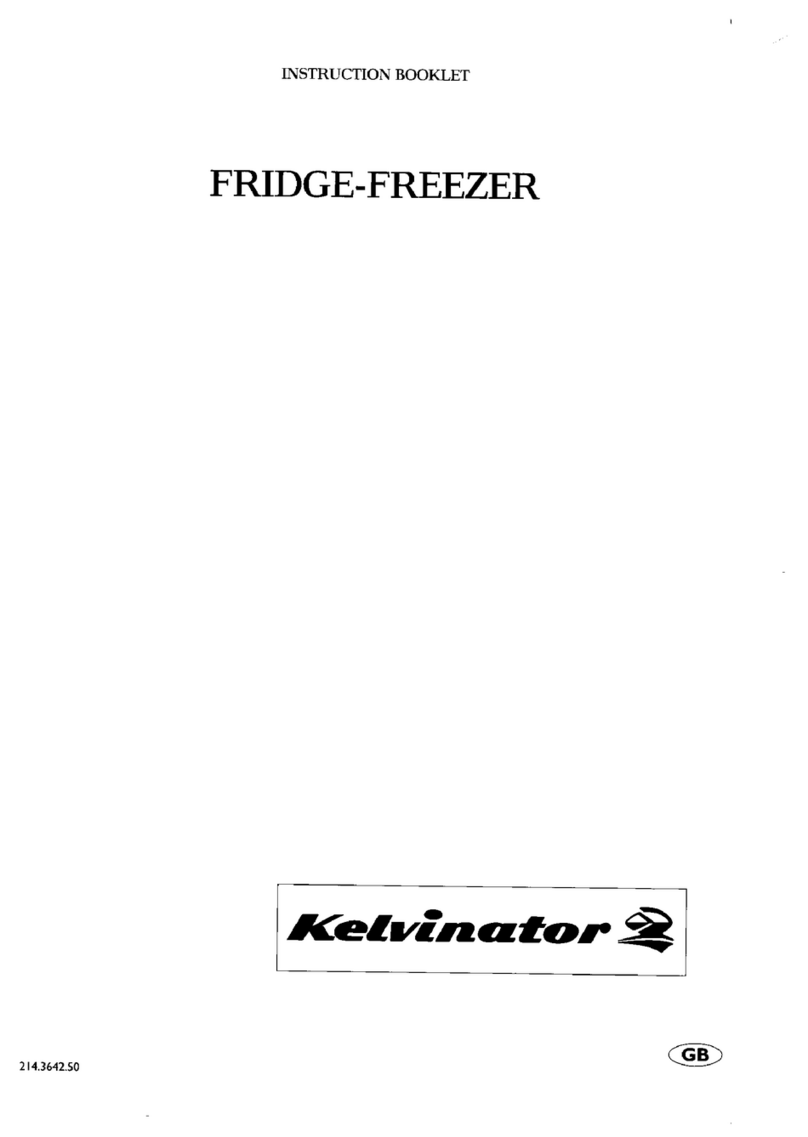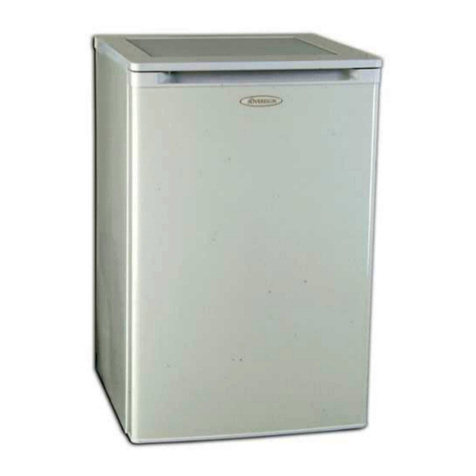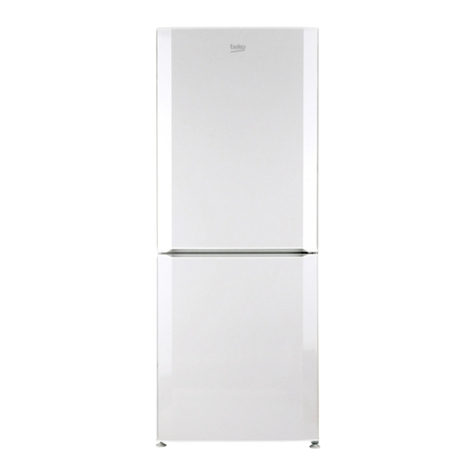8
05/2012
Freezing
- 24 hours before freezing we recommend to turn the temperature control to the max. setting and to
keep this setting even after freezing for a few hours.
The device is not compromised if the setting will not revert to a normal operating temperature (tem-
perature control in middle setting) after the freezing process, but for economic reasons you should
possibly avoid it.
- Place fresh food to be frozen in the upper compartment. In order for that to be always possible,
frozen food items need to be rearranged frequently.
- Fresh food should be frozen as fast as possible to the core. Therefore during freezing operation,
the temperature of fresh food should be lowered as fast as possible in order to keep formation of
ice crystals as little as possible and not to damage the food structure.
- If the freezing process is too slow, ice crystals build up and the food quality might get affected.
- Even frozen food should be stored in the lower compartments, in order to keep the upper com-
partment available for fresh food.
- Frozen food should be kept in contact with the bottom of the compartment.
- Keep a space between the single items for air circulation.
Storing frozen food
- Packed frozen merchandise should be stored in a 4-star-freezer compartment in accordance with
the manufacturer’s data. Make sure the food items do not defrost after purchase and to store them
as fast as possible in the freezer.
- It is possible to store food for longer periods of time, up to three months. This period might vary, so
please observe the storage information on the packaging of the merchandise.
IMPORTANT: Make sure that the temperature in the freezer does not rise above -18°C.
Moreover the device should be defrosted regularly. A thick layer of ice on the wall deteriorates the
cooling effect and the power consumption increases.
Safety precautions
- Do not store sizzling drinks in this device, such as mineral water, beer, sparkling wine, coke etc.
(risk of explosion).
- Once products have been defrosted halfway or completely, they should be consumed as soon as
possible and should not be frozen again, except they have been processed to a ready meal.
- In case of power failure, do not open the door. If the failure does not take longer than 12 hours, the
food will not be affected.
- Do not store bottles or cans. These can break when the contents freeze – or even explode, if they
contain carbonated drinks.
- Do not eat food that is still frozen. Do not allow children to eat ice cream directly from the freezer.
The cold can cause injuries in the oral cavity.
- Touching metal parts inside the device can cause symptoms similar to burns if the skin is very sen-
sitive.
- Do not touch frozen food with moist or wet hands; they could freeze to the items.
- For safety reasons, the freezer compartments feature a stopper. But they can also be removed
completely by pulling them upwards and then removing them. Reattach in reverse order.
Defrosting
The fridge has a automatic defrosting system. During defrosting the water drops drain off at the rear
side of the cooling chamber. The water running through a flume, is collected in a container under-
neath the compressor, where it will evaporate. Make sure the flume does not get clogged. Clean it
carefully with a pipe cleaner or knitting needle. A light formation of ice on the rear side during opera-
tion is normal.
To achieve better cooling and to save energy, defrost the freezer regularly. To start the defrosting
process turn the temperature control to the position 0 - OFF and disconnect the plug. Remove the
food items and keep covered at a cool location.
When the ice has melted, pour the condensate away and dry the interior of the device.
You may then restart the device by connecting the plug and turning the temperature control.
WARNING: Never use metal objects (e.g. knives) for removing ice from the vaporizer. The vapor-
izer could be damaged. A defect vaporizer could cause serious damages.










